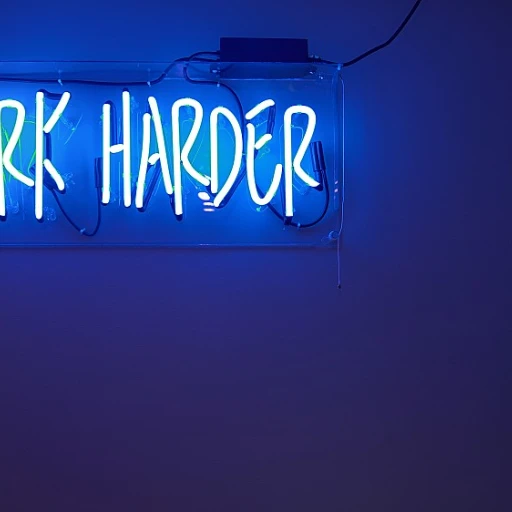
Eligibility Criteria for Short-Term Disability in Illinois
Determining Your Eligibility for Short-Term Disability
Understanding the eligibility criteria for short-term disability in Illinois is crucial for employees considering this option. Navigating the rules and intricacies of disability coverage can sometimes seem daunting. Fortunately, specific guidelines outline when an employee qualifies for these essential benefits.- Employment Status: To be eligible, you must typically be a full-time employee. Part-time or temporary roles might not offer the same coverage, although this depends largely on your employer's specific disability policy.
- Medical Condition: The disability must be tied to a medical condition that prevents you from performing your regular work duties. As supporting documentation, medical proof from a licensed healthcare provider is generally required when filing your disability claim.
- Coverage Waiting Period: Many policies enforce a waiting period, also known as an elimination period, before benefits commence. Navigating this waiting period is essential to ensure understanding of when benefits will begin.
- Insurance Policy Terms: Familiarize yourself with the specific terms laid out in your insurance policy. Terms can vary significantly between policy types and insurance companies, influencing your insurance claim process and benefit provisions.
- Employer-specific Policies: Some Illinois employers may have unique short-term disability coverage policies that could affect eligibility. It's advised to review your company's employee benefits handbook closely.
Navigating the Application Process
Steps to Successfully Applying for Disability
Applying for short-term disability coverage in Illinois involves understanding several key steps to ensure you receive your benefits efficiently. Recognizing the intricacies of this process is pivotal, as it directly impacts your income during your disability period.
Preparing Necessary Documentation
Initially, you need to gather appropriate documentation that supports your disability claim. Critical documents include your medical records detailing the relevant medical condition, as well as any employer policies related to short-term insurance coverage. Completion of this step is crucial for the insurance company to assess the validity of your term disability claim.
Filing the Claim
The next step involves the formal filing of your claim with your employer or directly with the insurance company, depending on the policy. Make sure you complete all required forms accurately and within the designated timeframes. Typically, there is a waiting or elimination period before benefits begin; understanding these timelines can help you manage your personal finances better during this period.
Awaiting Approval of Benefits
Once the application is submitted, the insurance company will review your disability insurance claim. During this time, employers may need to collaborate with the insurance provider to verify employment details and the applicable coverage terms. It is helpful to maintain communication with both parties to address any concerns or additional information requests promptly.
Understanding Application Policies
To further aid your understanding of similar leave policies and what they might entail, please explore resources like the Family and Medical Leave Act in New Jersey. This can offer insights into how state-specific laws might affect your experience and responsibilities during a disability period.
Understanding the Benefits and Limitations
The Basics of Benefits and Your Eligibility
When examining short-term disability benefits in Illinois, it's essential to have a clear understanding of both the benefits you might receive and the inherent limitations of these plans. Short-term disability coverage typically provides financial support to employees unable to work due to medical conditions. However, the extent and specifics of these benefits can vary significantly based on the policy your employer has chosen. One of the primary benefits of short-term disability insurance is the provision for a percentage of your usual income during the period you're unable to work. This financial assistance can be crucial for employees who are temporarily unable to earn a salary due to medical conditions. The amount and duration of the benefits are usually predetermined in the insurance policy. It's important to note that there is typically an elimination period or waiting period, often ranging from 7 to 14 days, before benefits begin. Additionally, short-term disability insurance does not cover every situation. For instance, it usually doesn’t cover workplace injuries that are typically covered by workers' compensation. Nor does it extend into long term needs, which is where long term disability insurance would come into play.Balancing Benefits With Insurance Limitations
While these benefits provide a level of financial security, they come with certain limitations. Most policies have a cap on the percentage of income covered—commonly 50% to 70%. There is also a maximum benefit period, usually ranging from a few months to a year, after which long-term disability coverage might need to be considered. Understanding these aspects is critical for managing expectations and planning financially during a period of disability. Another limitation to be aware of is the potential for insurance claim denial. This can happen if the claim does not meet specific policy criteria, such as particular medical condition documentation requirements. Thus, staying informed about the specific terms of your employer's insurance policy is crucial. For those investigating the broader implications of these benefits on employee experience, they can significantly affect workplace dynamics and well-being. It's important to understand how these features interrelate with other aspects of employment, such as retirement plans or social security disability options, affecting the comprehensive benefit landscape. These considerations are vital in ensuring that the benefit will meet your needs and that you are well-prepared to navigate any potential challenges that come with filing a disability claim. Delving into knowing your love languages and personal motivations can also help improve the overall work-life balance and experience (source).Impact on Employee Experience and Workplace Dynamics
Influence on Company Culture and Team Dynamics
When an employee experiences a short-term disability, it can significantly impact not only their personal work experience but also the dynamics within the workplace. The introduction of a temporary disability can shift team dynamics as colleagues adjust to accommodations or workflow changes necessitated by an employee’s absence.
Employers need to consider factors such as the impact on team morale and the redistribution of workload. Supporting employees during their short-term disability period fosters an inclusive and considerate workplace environment, which is increasingly essential for maintaining positive employee relations and overall productivity.
Communication and Transparency
Transparent communication about the short term disability policy with all employees can enhance understanding and prepare the organization for any future situations. By doing so, employees will feel more secure and supported, knowing the steps and support mechanisms in place should they need to utilize these benefits in the future.
Employers should also maintain open communication channels with employees currently on short-term disability. This keeps them informed of relevant work developments and conveys the company’s commitment to their well-being, facilitating a smoother transition back to work post-recovery.













